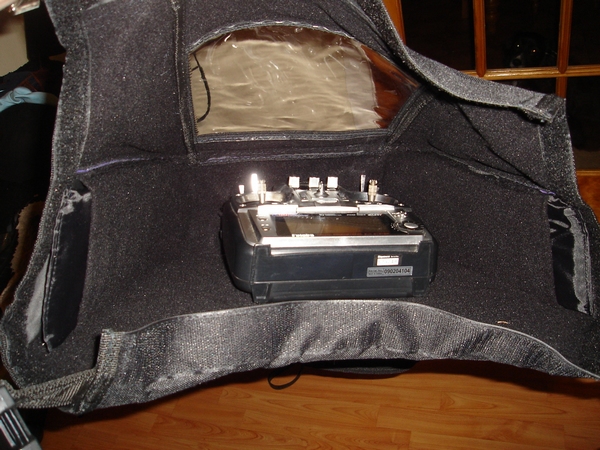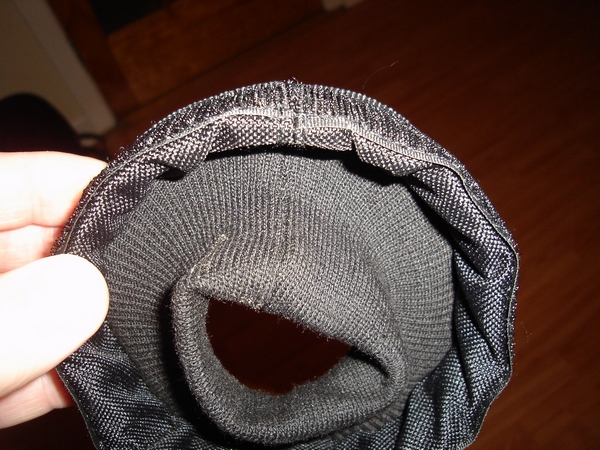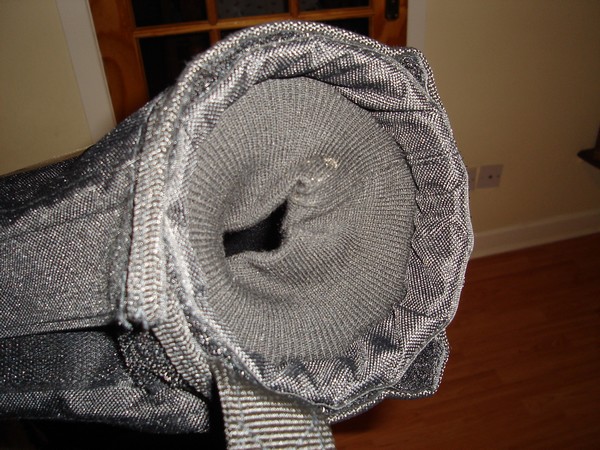For months prior to xams my “other ‘half” kept, almost demanding, that I tell her what she could get me for christmas.
Eventually I told her I’d like a Muff. ( :shock: No rude comments from Mr. Boyd please! :oops: )
Although this seemed a good idea I was concerned about aspects like…
a/ Will the top of the muff be too close to the tops of the controls to enable proper and comfortable operation of the control sticks and switches?
b/ Will the muff be big enough for my Tx?
c/ How do the manufacturers know exactly where to make the hole for my particular Tx’s antenna?
d/ Will the “Inlet” parts of the muff,…….the bit where your hands go through……be large enough to accommodate my forearm while wearing a thickly lined jacket?
In fact, the more I thought about the fitting, and using of my Tx inside a wind proof and warm muff, the less I thought it was a good idea.
But it kept “ ‘er ” quiet and gave me something to look forward to on xmas morning.
Well…………………………
Concerns about not being able to fit my Tx inside the muff proved totally wasted.

The hard base is 46cm wide at it’s part closet to the pilot, (or the pilot’s tummy I should say.) and narrows to 22cms at the part farthest away. The “walls” of the muff are 13 cm high.
There is enough room for my Tx to get lost in!
But how about operating the controls? How does it feel?
The short answer to that last question is, “Different.” I fly “Thumbs Up” with the sticks at their shortest height and there are moments when parts of the back my hands come into contact with the clear plastic window on the top of the muff. However, it doesn’t seem too much of an encumbrance or obstruction to flying operation. Possibly someone with larger hands and using sticks with a longer setting might find more contact.
I must admit that at the time of writing this I haven’t actually flown a plane using the muff but I don’t think this aspect of control operation will be a hindrance.
So, where does the antenna go? The simple answer is, “Wherever you like!” Supplied with the muff are a couple of plastic grommets. The idea is that you cut a small hole in the fabric of the muff wherever your particular antenna needs to be, and then the plastic grommet “snaps” into place around the hole. One part of the grommet outside the muff, one part inside, to stop the hole that you cut from tearing further. It’s very simple.
So to the question of hand/arm access.
Supplied in the “kit” of pieces of this muff are two “Inlets” see here

These have elasticated parts that your hand and forearm pass through. Around the outside of the inlets is strong Velcro which attaches it to the main part of the muff.
(It’s a little difficult to see from this next picture, but the inlet is in place, and the main muff is wrapped around it, being attached by Velcro. There is part of the back strap in the bottom of the shot as well)

With these in place you could only use the muff if you were wearing a very light coat or jumper. Certainly access while wearing a thick, lined jacket would be virtually impossible. The thick part around your forearm wouldn’t pass through the elasticated part of the inlet.
The answer, I found, was to not use the elasticated inlets at all. Simply use the muff without the inlets, and access even with my thickest of flying jacket, was quick and easy. So launching a plane and returning my hand to the controls will be no problem at all.
Of course, the real “proof-of the-pudding” won’t come until I’ve flown with it. That can’t happen till this snow has dissipated.
I’m hoping that there might be a window of opportunity on Wednesday. So, like christmas, I’ll have to wait and see!!!
Keith